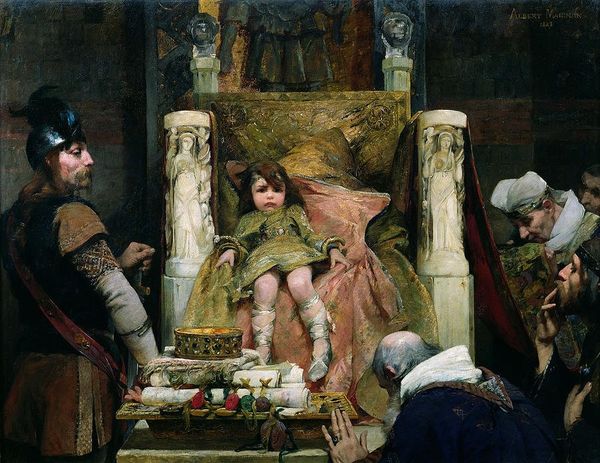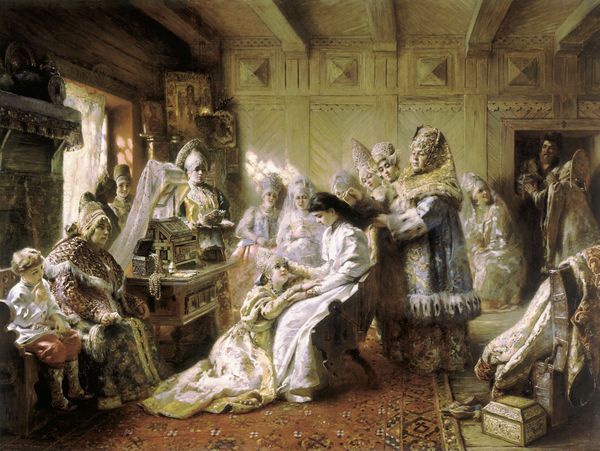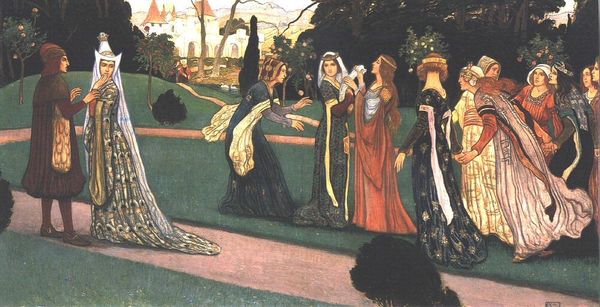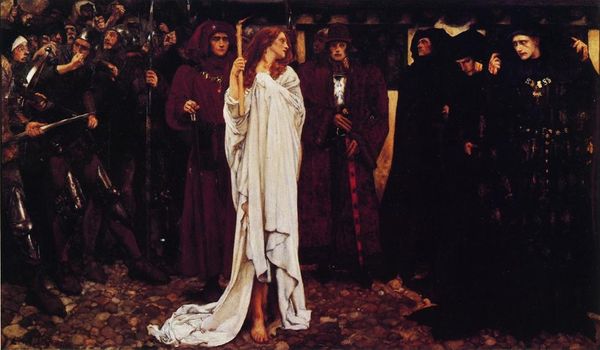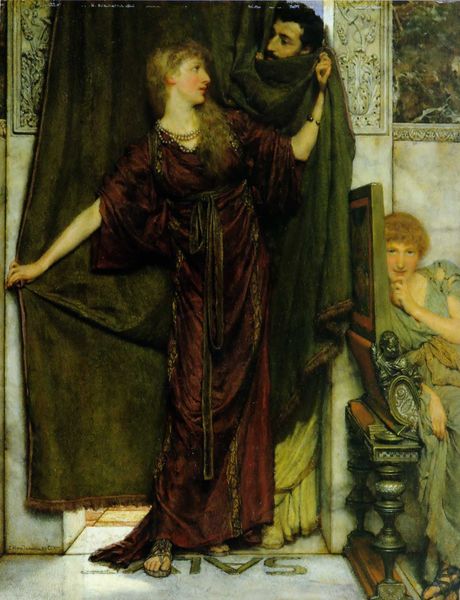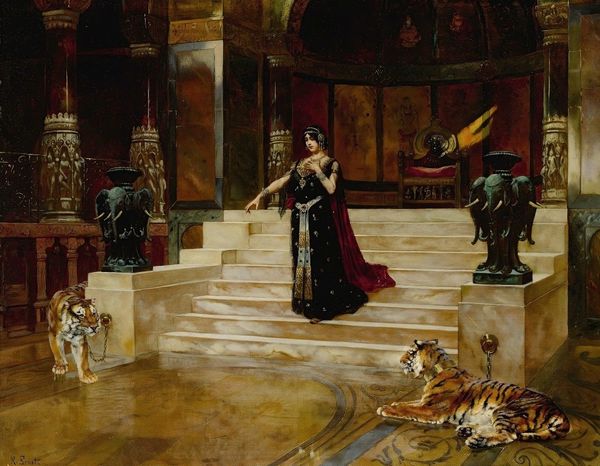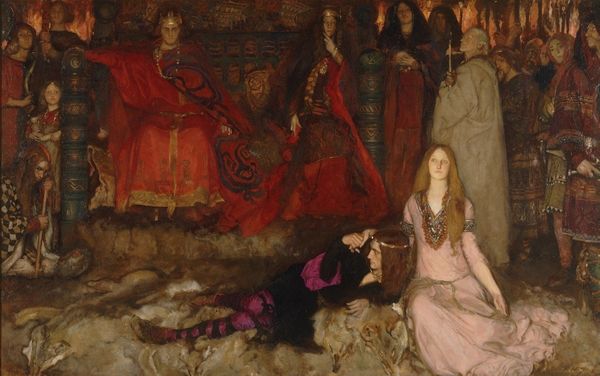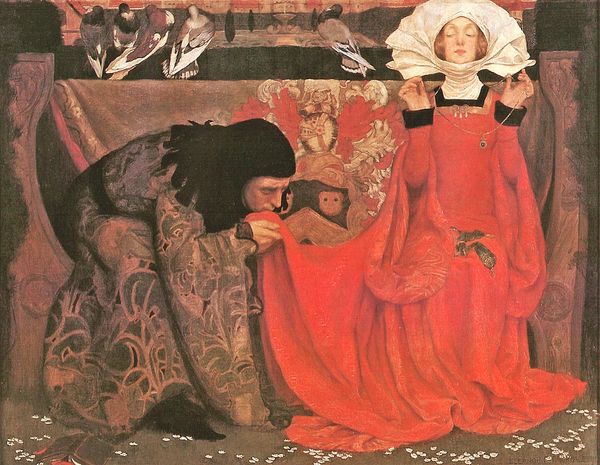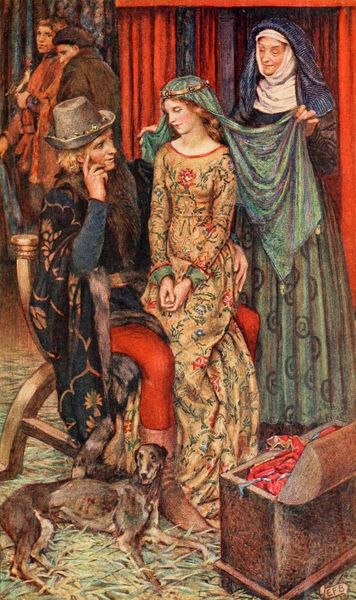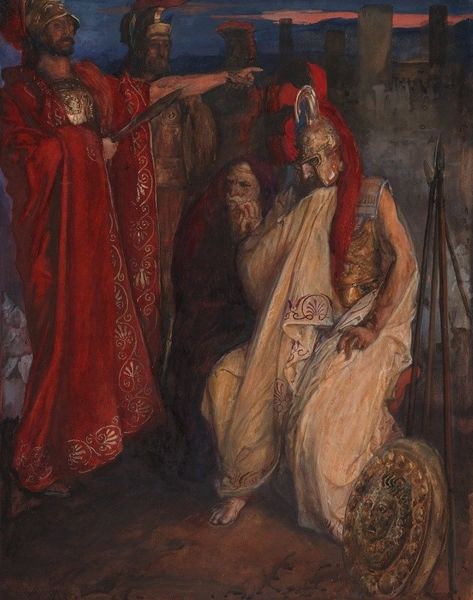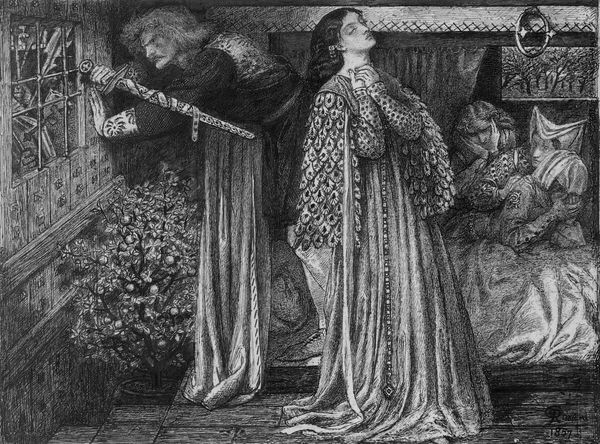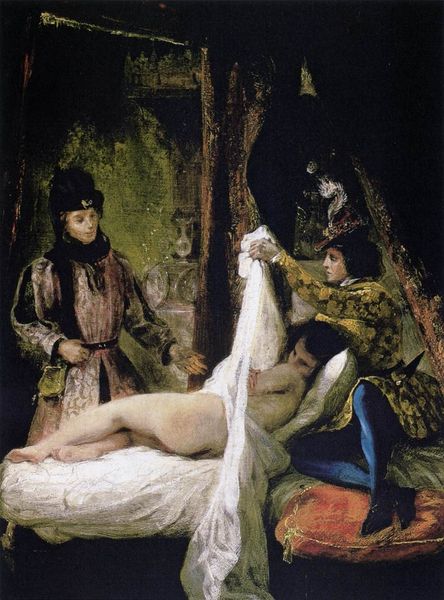
Copyright: Public domain
Editor: Here we have Vardges Sureniants's 1909 painting, "Return of Queen Zabel of Armenia". It depicts a queen's return with opulent fabrics, and it just feels very staged. What’s your take on this piece? Curator: I'm immediately drawn to the materiality of the work. Consider the weight of the fabrics depicted – the velvet, the ermine, the brocades. It’s not simply about depicting wealth; it's about visualizing the immense labor involved in their creation and acquisition. Who produced these materials? What were the trade routes that brought them to Armenia? These fabrics weren't just decoration, but signifiers of power and influence derived from specific modes of production. Editor: So you're focusing on how the materials tell a story beyond just what they depict visually? Curator: Precisely. Think about the social context implied by such displays of extravagance. The crown jewels themselves represent a huge exploitation of mineral resources, fashioned into items designed to reinforce an ideology. Even the artist's labor to produce this painting enters the conversation. It highlights the relationship between the elite and the vast network of labor required to uphold their status. What does it say about the painter making the work, considering such displays of power? Editor: I hadn't considered the supply chain, as it were, behind everything shown. Curator: It asks us to reconsider traditional notions of beauty and craftsmanship. Instead of simply admiring the artist's skill in rendering texture, we can investigate the social dynamics embedded within each brushstroke, how materials speak to systems. Editor: This gives me a completely new way of approaching historical paintings. Thanks for illuminating the materials in this work. Curator: My pleasure. Thinking about art in this way allows for deeper explorations of culture and societal issues.
Comments
No comments
Be the first to comment and join the conversation on the ultimate creative platform.
